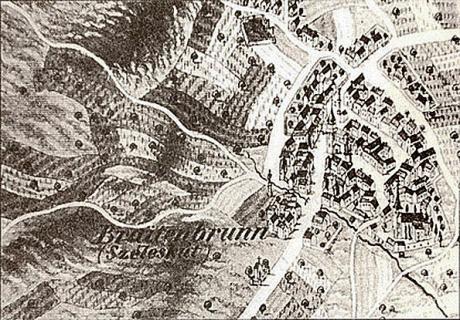History
 A lively local history dating back to the 13th century, shaped by the different population influences, is the cultural basis of today's lake community of Breitenbrunn on Lake Neusiedl.
A lively local history dating back to the 13th century, shaped by the different population influences, is the cultural basis of today's lake community of Breitenbrunn on Lake Neusiedl.
The first mention of the place name, then "Praittnprun", dates back to 1257. Finds from the time around the birth of Christ prove that it was always good to live here .The settlers from Upper Franconia settled broadly around the well (Breit um den Brunnen) and built their houses here. The place was a Breitanger village (community meadow village) according to the colonial scheme from the pre-Turkish period. The meadow was bordered and fortified by the main street (today Hayden) and the Kirchengasse (today the last remains of the fortifications can be discovered at the southeastern cemetery wall behind the parish church).
Changing rulers
Before 1262, the present municipal area belonged to the Count of Lutzmannsburg and was named "Praytunprun in capite Ferhew" according to a document in the cathedral quarter of Raab (Györ), i.e. "Breitenbrunna at the upper end of Lake Neusiedl". In 1332 the Hungarian name "Praytunbpron in vulgari hungarico Zyluskuth" was formed, i.e. "Szekleskut" or "Fertöszékleskuth", as the official Hungarian place name from the end of the 19th century until 1921. From 1569, the village was included in the "Geistliche Lehenschaft" (clerical fiefdom) of the dominion of Forchtenstein, and in 1622 the Esterhazys took over ownership. The oldest registers of Breitenbrunn date back to 1668. The still existing village well facilitates the explanation of the name.
Eventful history
 Anyone who visits the village today with its many historic buildings - the old townscape was marked by farmsteads and crooked courtyards as well as partly two-story town houses facing the street on the eaves side - does not suspect that Breitenbrunn burned down four times between 1597 and 1748. Since all the houses in the community were covered with reeds or wooden shingles at the time, it is easy to understand that when a fire broke out, the entire settlement was robbed of its flames. Not only the Turkish wars, but also the fire-raising insurgents such as the Kuruc repeatedly inflicted massive damage on the village.
Anyone who visits the village today with its many historic buildings - the old townscape was marked by farmsteads and crooked courtyards as well as partly two-story town houses facing the street on the eaves side - does not suspect that Breitenbrunn burned down four times between 1597 and 1748. Since all the houses in the community were covered with reeds or wooden shingles at the time, it is easy to understand that when a fire broke out, the entire settlement was robbed of its flames. Not only the Turkish wars, but also the fire-raising insurgents such as the Kuruc repeatedly inflicted massive damage on the village.
Market right award
In 1689 Breitenbrunn was awarded the market right which it still holds today. Thus on Thursday in the Johannis week, the Johannis market and on Wednesday in the Leonhardi week in November, the Leonhardi market takes place. The market day was also the day of judging. The former market judges (today mayors) were responsible for the jurisdiction. Three weeks before the coming market and judgement day, the sentences were announced on the pillory tower. In 1951 the place received its own municipality emblem, where the defense tower is depicted. The defense tower that was already erected in the 13 century, received the current form in the 16 century and till now remains the landmark of the market municipality. Since January 2010 the place is called Breitenbrunn at the Neusiedl lake due to a local council and government resolution.
 Much of the old building fabric is still preserved today and takes visitors to the village back in time. Contemporary witnesses include the fortified tower with the Tower Museum, the village well which gives the village its name, the artists' houses, the historic town center, the cellar ring as well as many chapels and wayside shrines.
Much of the old building fabric is still preserved today and takes visitors to the village back in time. Contemporary witnesses include the fortified tower with the Tower Museum, the village well which gives the village its name, the artists' houses, the historic town center, the cellar ring as well as many chapels and wayside shrines.
Immerse yourself in more recent history
Where today at first glance idyll rules, art history was written. The oldest house in Breitenbrunn on Lake Neusiedl, with its cellars, interiors, courtyard and garden, has been a venue for experimental art since the late 1960s. Initiated and run by the artist couple Fria Elfen and Wil Frenken as work shop Breitenbrunn, avant-garde works such as Fluxus, Concrete Art, Visual Poetry, Computer Art, New Music and Experimental Movie were produced, presented and discussed until 1980.
